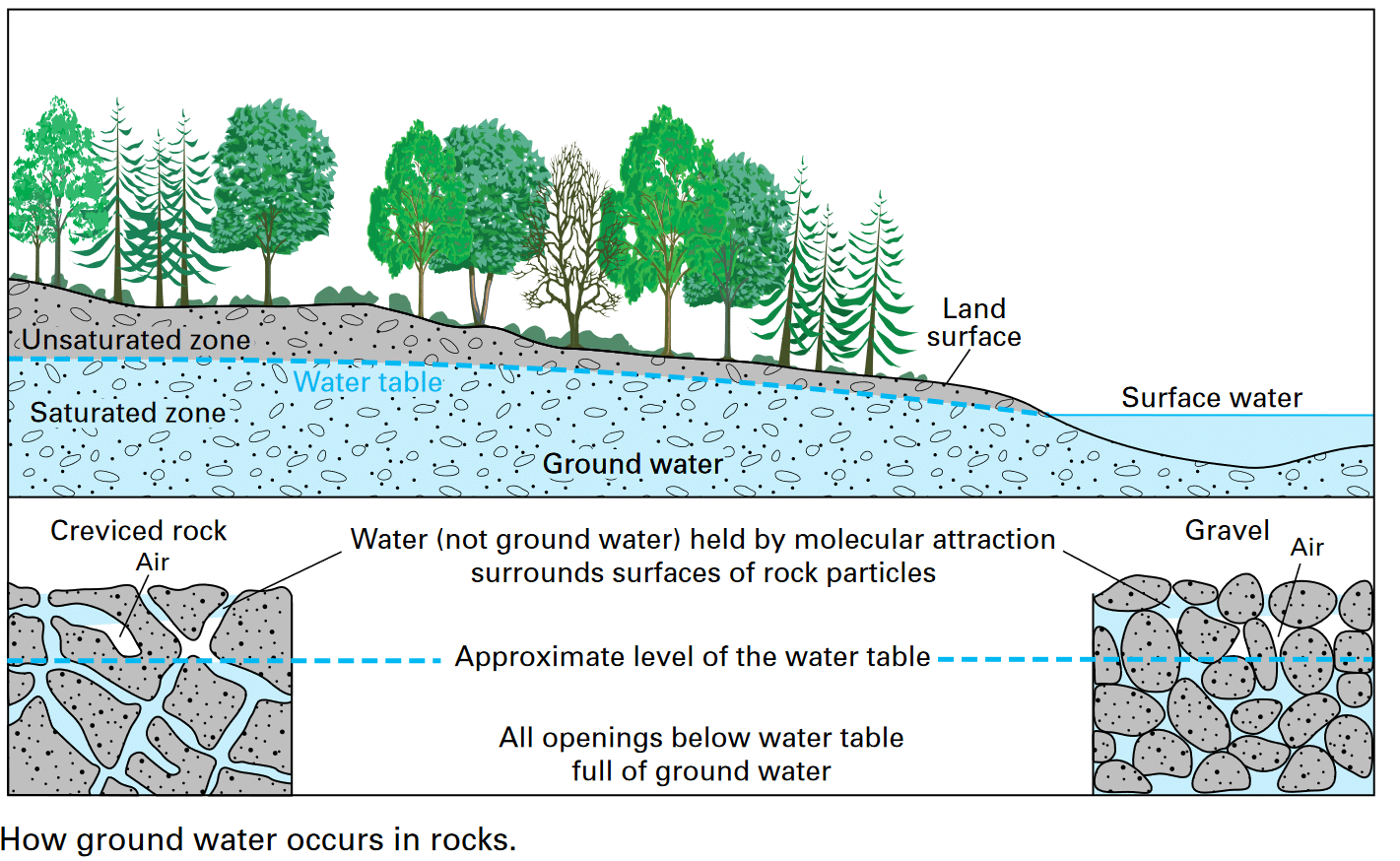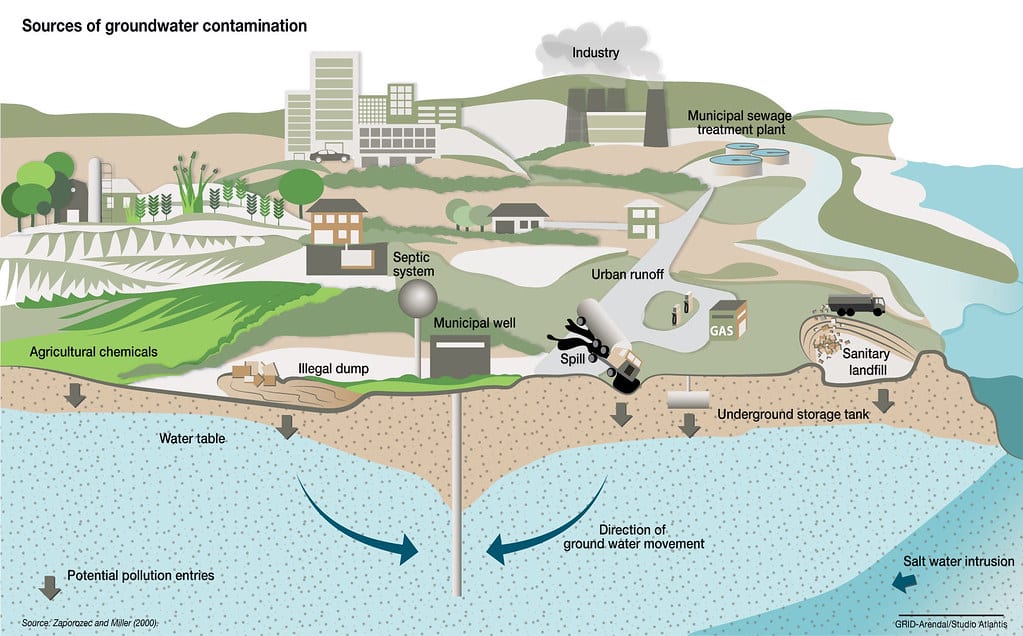As the world grapples with escalating water scarcity, one of the most pressing challenges is the depletion of aquifers, underground reservoirs that provide a significant portion of our freshwater supply. Across the globe, countries are witnessing a steady decline in aquifer levels, posing severe threats to ecosystems, agriculture, and human livelihoods. In this article, we delve into the causes and far-reaching effects of low aquifer levels, while examining the innovative solutions that some nations have embraced to combat this alarming crisis.
—
Last month The New York Times released the results of their investigation into the groundwater crisis in the United States, and their findings are extremely concerning.
Using data from over 80,000 wells, the investigation revealed aquifer levels are critically depleting nationwide. Around 45% of wells have shown significant decline since 1980, and 40% have reached a record low in the past decade, with 2022 being the most damaging so far. With 90% of the United States’ water systems supplied by aquifers, agriculture and sustainable access to food and water is already facing serious jeopardy.
The US is not the only country in a crisis. Europe is facing a “steady depletion” in aquifer levels across nearly the whole continent. Regions of Bangladesh, a country that usually struggles with too much water during monsoons, have been forced to completely shift their agricultural practices to deal with depleted and contaminated groundwater. Decades of urbanisation have monumentally reduced aquifer levels in cities like Nairobi, Kenya, and Kabul, Afghanistan. Droughts and a rising population have seen Australia’s groundwater problems reach the brink of crisis.
Reliable access to groundwater has become dire, and with climate change accelerating out of control, reliance on aquifers only grows more precarious.
What Is an Aquifer?
Underground, in layers of permeable rock and sediment, sits 97% of the world’s liquid freshwater. You can find water in all layers of the ground, but closer to the surface it is in lower supply. At enough depth, below a line called the water table, the ground becomes so saturated with water that this can easily and quickly be drawn out via springs or wells. This saturated area beneath the water table, where most water is drawn from, is called an aquifer.

The Water Table. Image: USGS.
Water from aquifers is used by everyone, from individuals to corporations to governments, and used for many vital purposes, such as supplying a home with drinking water or irrigating an industrial crop farm.
Typically, rainwater or other forms of water runoff replenish the aquifers over time so they stay full, saturated, and stable. However, over the last half-century, water has been pumped out at an unsustainable rate. Water regeneration lags well below the rate we pull water from the ground, and since aquifers typically replenish the water levels of rivers and lakes as well, aquifers are emptying out and all global freshwater has been put at risk.

The Aquifer Recharge Cycle. Image: Govt. of Newfoundland and Labrador.
Why Are Aquifer Levels Falling So Low?
After World War 2, technological advancements in pump technology rapidly developed. The US agriculture industry quickly utilised this technology to accelerate the scale of agricultural production. This turned the US into an international behemoth in agricultural exports, and from the 1950s onward farms around the world followed suit.
For instance, from 1950 to 1985, India doubled the land area irrigated by surface water but increased by 113 times the land area irrigated by aquifers. A 2012 study showed that China’s groundwater use for irrigation rose from 10 billion cubic meters a year in the 1950s to over 100 billion cubic meters a year in the 2000s. Overall, agriculture accounts for around 70% of global freshwater withdrawal.
While the main culprits for aquifer depletion are the agriculture industry and drinking water systems (aquifers supply 2.5 billion people with their sole source of drinking water), it is important to keep in mind that many other practices contribute heavily to this issue. Oil, gas, coal, and many mining industries both drain and pollute groundwater resources at very high rates and in general industrial factories use water at an unsustainable level.
With so much water being used, one would think that regulation is in order, but that is not the case. Governments across the world struggle mightily to implement proper regulation.
Companies like Nestle have been able to lobby their way to access public groundwater for decades. Some US states have rules that allow aquifers to be drained completely. Farming monocultures have increasingly dominated the agricultural industry, with a 2020 study showing that 70% of the world’s farmland is operated by 1% of its farms. A few countries, such as Chile, even allow private companies to obtain “perpetual ownership” of water assets.
You might also like: How Water Shortages Impact Food Security
What Are the Effects?
Water scarcity, already a major issue, will only proliferate as groundwater reserves run dry, but food scarcity will also grow, too. With agriculture acting as one of the main causes of groundwater exhaustion, it also will become one of its main victims. In the face of climate change and water depletion, farming methods will need to continue to find ecologically conscious solutions to these issues if agricultural systems are to become sustainable.
Aquifers are also at major risk of pollution. Excessive pumping can cause all sorts of contaminants to reach underground water systems, and it is very difficult to remove these pollutants. Dangerous acids, metals, and other chemicals can easily infiltrate groundwater as side-effects of mining, drilling, and other invasive practices. Groundwater pumping in coastal areas can also result in saltwater intrusion, allowing saltwater to contaminate freshwater and essentially render it unusable.
Another cause for concern is land subsidence. When water is extracted from the ground, much of the ground’s mass is removed, causing the land to irreversibly sink lower and lower. A 2022 Stanford Study has shown that California land may continue to sink for centuries unless aquifer levels are regenerated, and this issue is similarly occurring throughout the world, in China, Indonesia, Mexico, and many other countries.

Sources of Groundwater Contamination. Image: GRID-Arendal.
What Solutions Are Being Implemented?
With no end in sight to the global water crisis, water conservation is key to managing a sustainable source of water in the decades to come. Solutions can come in a variety of forms, from political regulation to technological advancement, but dedication and creativity are key to mitigating this impending global catastrophe.
Managed Aquifer Refresh is a critical technique that has been successfully implemented to refresh aquifers across the world, such as in Bangladesh and China, by using various techniques to collect freshwater, treat it, and put it back into the ground. Some of the methods are quite innovative as well.
Many cities and towns in the US state of Virginia are using treated sewage wastewater to recharge their aquifers in a practice that is not as gross as it sounds. Beijing transfers water from nearly 1500km away in order to maintain a flexible and steady flow and supply of water that can fluctuate based on demand. Communities in central Kenya have been able to utilise sand dams to create self-perpetuating water and agricultural systems.
Governments, corporations, and even individuals must all be willing to adjust their practices and follow strict regulations if there is to be hope of balancing global groundwater levels. There is still time, and as governments and industries become more aware of the fact that they need to adapt, policy changes have already been implemented to conserve what little water is left and replenish it to its former levels. Not all is lost, and innovative methods are helping mitigate catastrophe for now. But more must be done, and soon.
You might also like: Exploring the Most Efficient Solutions to Water Scarcity


















